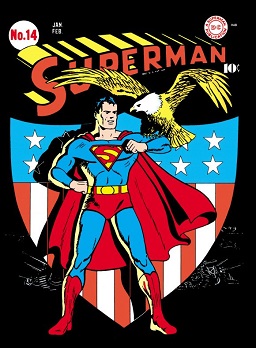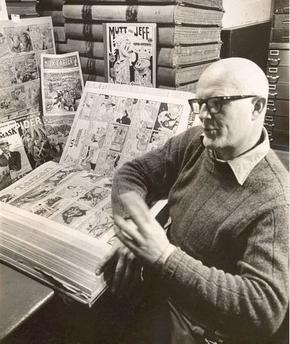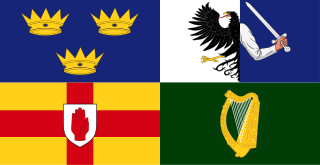Comics have followed different paths of development throughout the world.
Comics have followed different paths of development throughout the world.

A comic book, also called comicbook, comic magazine or simply comic, is a publication that consists of comics art in the form of sequential juxtaposed panels that represent individual scenes. Panels are often accompanied by descriptive prose and written narrative, usually, dialogue contained in word balloons emblematic of the comics art form.
Bandes dessinées, abbreviated BDs and also referred to as Franco-Belgian comics, are comics that are usually originally in French and created for readership in France and Belgium. These countries have a long tradition in comics, separate from that of English-language comics. Belgium is a mostly bilingual country, and comics originally in Dutch are culturally a part of the world of bandes dessinées, even if the translation from French to Dutch far outweighs the other direction.
A graphic novel is a long-form work of sequential art. The term graphic novel is often applied broadly, including fiction, non-fiction, and anthologized work, though this practice is highly contested by comics scholars and industry professionals. It is, at least in the United States, typically distinct from the term comic book, which is generally used for comics periodicals and trade paperbacks.

Comics is a medium used to express ideas with images, often combined with text or other visual information. It typically takes the form of a sequence of panels of images. Textual devices such as speech balloons, captions, and onomatopoeia can indicate dialogue, narration, sound effects, or other information. There is no consensus among theorists and historians on a definition of comics; some emphasize the combination of images and text, some sequentiality or other image relations, and others historical aspects such as mass reproduction or the use of recurring characters. Cartooning and other forms of illustration are the most common image-making means in comics; Photo comics is a form that uses photographic images. Common forms include comic strips, editorial and gag cartoons, and comic books. Since the late 20th century, bound volumes such as graphic novels, comic albums, and tankōbon have become increasingly common, along with webcomics as well as scientific/medical comics.

The Golden Age of Comic Books describes an era in the history of American comic books from 1938 to 1956. During this time, modern comic books were first published and rapidly increased in popularity. The superhero archetype was created and many well-known characters were introduced, including Superman, Batman, Robin, Captain Marvel, Captain America, and Wonder Woman.

Quebec comics are French language comics produced primarily in the Canadian province of Quebec, and read both within and outside Canada, particularly in French-speaking Europe.

An American comic book is a thin periodical originating in the United States, on average 32 pages, containing comics. While the form originated in 1933, American comic books first gained popularity after the 1938 publication of Action Comics, which included the debut of the superhero Superman. This was followed by a superhero boom that lasted until the end of World War II. After the war, while superheroes were marginalized, the comic book industry rapidly expanded and genres such as horror, crime, science fiction and romance became popular. The 1950s saw a gradual decline, due to a shift away from print media in the wake of television and the impact of the Comics Code Authority. The late 1950s and the 1960s saw a superhero revival and superheroes remained the dominant character archetype throughout the late 20th century into the 21st century.

In comics, a one-shot is a work composed of a single standalone issue or chapter, contrasting a limited series or ongoing series, which are composed of multiple issues or chapters. One-shots date back to the early 19th century, published in newspapers, and today may be in the form of single published comic books, parts of comic magazines/anthologies or published online in websites. In the marketing industry, some one-shots are used as promotion tools that tie in with existing productions, movies, video games or television shows.
David McKay Publications was an American book publisher which also published some of the first comic books, including the long-running titles Ace Comics, King Comics, and Magic Comics; as well as collections of such popular comic strips as Blondie, Dick Tracy, and Mandrake the Magician. McKay was also the publisher of the Fodor's travel guides.

Dean Motter is an illustrator, designer and writer who has worked for many years in Canada (Toronto) and the United States. He is best known for his album cover designs, two of which won Juno Awards. He is also the creator and designer of Mister X, one of the most influential "new-wave" comics of the 1980s.

William Elsworth Blackbeard, better known as Bill Blackbeard, was a writer-editor and the founder-director of the San Francisco Academy of Comic Art, a comprehensive collection of comic strips and cartoon art from American newspapers. This major collection, consisting of 2.5 million clippings, tearsheets and comic sections, spanning the years 1894 to 1996, has provided source material for numerous books and articles by Blackbeard and other researchers.

Crime comics is a genre of American comic books and format of crime fiction. The genre was originally popular in the late 1940s and early 1950s and is marked by a moralistic editorial tone and graphic depictions of violence and criminal activity. Crime comics began in 1942 with the publication of Crime Does Not Pay published by Lev Gleason Publications and edited by Charles Biro. As sales for superhero comic books declined in the years after World War II, other publishers began to emulate the popular format, content and subject matter of Crime Does Not Pay, leading to a deluge of crime-themed comics. Crime and horror comics, especially those published by EC Comics, came under official scrutiny in the late 1940s and early 1950s, leading to legislation in Canada and the United Kingdom, the creation in the United States of the Comics Magazine Association of America and the imposition of the Comics Code Authority in 1954. This code placed limits on the degree and kind of criminal activity that could be depicted in American comic books, effectively sounding the death knell for crime comics and their adult themes.
Galerie Lambiek is a Dutch comic book store and art gallery in Amsterdam, founded on November 8, 1968 by Kees Kousemaker. His son Boris Kousemaker has been the owner since 2007. From 1968 to 2015, it was located in the Kerkstraat, but in November 2015, the store moved to Koningsstraat 27. As of 2018, Lambiek is the oldest comics store in Europe, and the oldest worldwide still in existence.
Maple Leaf Publishing was a World War II-era Canadian comic book publisher active during the Golden Age of Comic Books. They were one of four publishers—along with Anglo-American Publishing, Hillborough Studios, and Bell Features—which published "Canadian Whites"—black-and-white comic books with colour covers that proliferated during the war years when American imports were restricted. Maple Leaf Publishing started publishing comic books in March 1941 and went out of business in late 1946.
Canadian comics refers to comics and cartooning by citizens of Canada or permanent residents of Canada regardless of residence. Canada has two official languages, and distinct comics cultures have developed in English and French Canada. The English tends to follow American trends, and the French, Franco-Belgian ones, with little crossover between the two cultures. Canadian comics run the gamut of comics forms, including editorial cartooning, comic strips, comic books, graphic novels, and webcomics, and are published in newspapers, magazines, books, and online. They have received attention in international comics communities and have received support from the federal and provincial governments, including grants from the Canada Council for the Arts. There are comics publishers throughout the country, as well as large small press, self-publishing, and minicomics communities.
The history of American comics began in the 19th century in mass print media, in the era of sensationalist journalism, where newspaper comics served as further entertainment for mass readership. In the 20th century, comics became an autonomous art medium and an integral part of American culture.
Notable events of 2022 in comics. It includes any relevant comics-related events, deaths of notable comics-related people, conventions and first issues by title.

An Irish comic is a periodical published in Ireland that contains comic strips. Ireland's comic book market has historically been very small, and closely linked to the British market. In recent years, many comics have been released with themes drawn from Irish mythology and history. The Irish comic industry has its roots in Irish nationalism and Irish Catholicism. Most comics are in English, but some in the Irish language have also been produced. Authors have often portrayed Cú Chulainn and the like as superheroes, and made explicit connection between them and Irish revolutionaries.